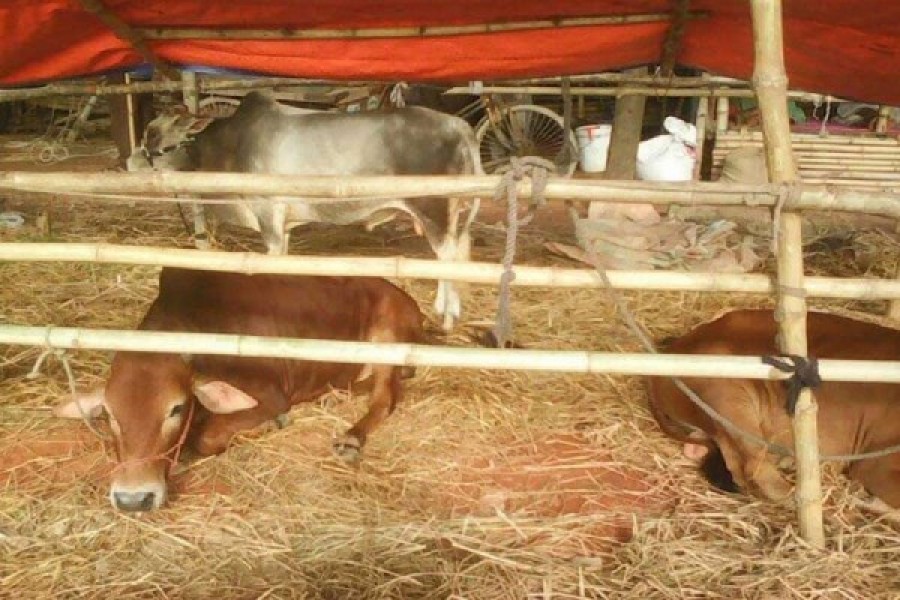The government has resolved to stop smuggling of cows into Bangladesh ahead of the coming Eid-ul-Azha in order to ensure fair price for local cattle farm owners. But the print media photographs of Indian cows entering Bangladesh through the borders in remote areas appear to be depressing. With the approach of the Eid-ul-Azha, the second largest Muslim religious festival in the country, all-out preparations are taken to shut all possible entry points for smuggled cows. The culprits adopt surreptitious methods in the initial phase, but as hordes of others join them the border-based obstructions are virtually blown to smithereens. Very few can grasp the sheer extent of power wielded by the syndicates involved in cow smuggling into Bangladesh from across the border.
The inter-ministerial meeting in mid-July seemed to be highly serious in checking the freestyle entry of various types of cattle, the cow in the main, from the neighbouring country. Chaired by the State Minister for Fisheries and Livestock, the meeting unequivocally emphasised the imperative of stopping illegal entry of Indian cows into the country. With Eid only just over a week away, the government meeting could not have been timelier. Unlike previous such meetings, this one spotlighted the smuggling issue with added urgency, and reasonably at that. Once afflicted by the reckless entry and formidable presence of smuggled cows, the Eid-ul-Azha cattle market in the country eventually began tolling the death knell for the country's livestock sector. But a positive aspect also surfaced. Upon being buoyed by a favourable condition coupled with various types of government incentives, the cattle and dairy farms found themselves entering a new era. Apart from seasoned farm owners, younger generations of entrepreneurs got themselves engaged in the sector. They replaced many traditional concepts of cattle rearing with innovative ideas. A few women cattle-rearing entrepreneurs also emerged in different parts of the country.
Barring the blight of fattening 'deshi' cows with injections of steroid, hormone and, in cases, harmful substances by a section of cattle farms, the general picture now makes one feel upbeat. A lot of communities have already started taking pride in becoming self-sufficient in sacrificial cows during Eid-ul-Azha. As per the estimate of cattle farmers, this year Bangladesh can boast of more cattle than their likely demand during the coming Eid. In spite of the onslaught of a countrywide flood, 11 million cows, goats and buffaloes are expected to be traded out of the total 11.8 million. During the 2018 Eid-ul-Azha, 10.5 million cattle head changed hands. The farmers and traders had brought to the market 11.5 million sacrificial animals.
A remarkable development in terms of Bangladesh-bound cattle smuggling deserves special mention. According to officials at the Ministry of Fisheries and Livestock, a total of 92,000 cows entered Bangladesh from outside in 2018. In the earlier years, the number had shot to the formidable figure of 2.5 million annually. It's no overstatement that Bangladesh is among the countries now nearly self-sufficient in cattle resources. Against this backdrop, continued focus on cattle rearing by livestock officers is expected to go a long way towards introducing Bangladesh as a fast emerging cattle producing country.


